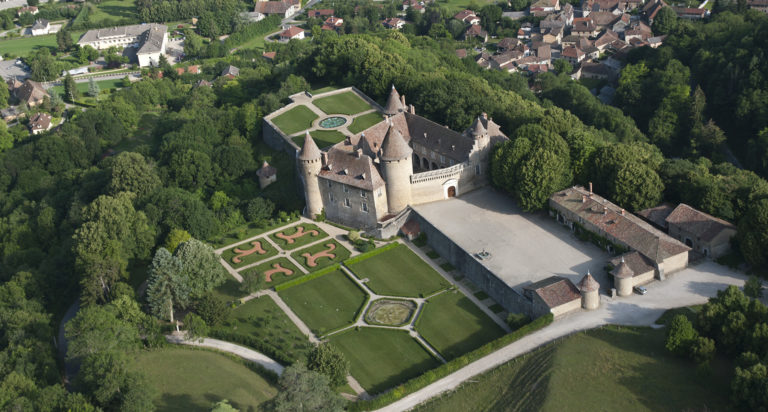From the Middle Ages to the 19th century, several centuries of history have seen the successive construction of illustrious and prestigious castles in Isère. Close to Grenoble and Lyon, the Dauphiné valleys are full of mottes castrales, castles and strongholds, defensive fortifications or rich residences of the great families of the Dauphiné seigneuries.
By car, discover the castles of the Vals du Dauphiné in Isère.
The castle of Virieu – Val de Virieu
The Castle of Virieu is a castle from the year 1000 (11th-18th century). Surprising by its military character and its French gardens, it offers to the visit of very beautiful rooms.
The Castle of Virieu is a real journey back in time, starting with the avenue of chestnut trees leading to the large courtyard… In front of you, you will discover the imposing entrance door decorated with its 2115 original nails. You can admire its pediment bearing the coat of arms of the Virieu family. Behind this door, the castle is organised around the main courtyard decorated with the cannons offered by King Louis XIII in 1622. Time passes to the rhythm of its sundial, which is above all symbolic. You will then discover a succession of six rooms, entirely furnished, representing the art of living from the Middle Ages to the present day!
It is also a castle, where the bucolic, through the park and by a walk in the French Gardens, invite you to stroll to the terraces. Enjoy the panorama on the Bourbre Valley.
A little extra: The castle of Virieu has a rich programme of events for all generations. A real pleasure to immerse oneself in the atmosphere of thousand-year-old castles. We are transported to another era, the princesses, the little knights in the making and their companions!
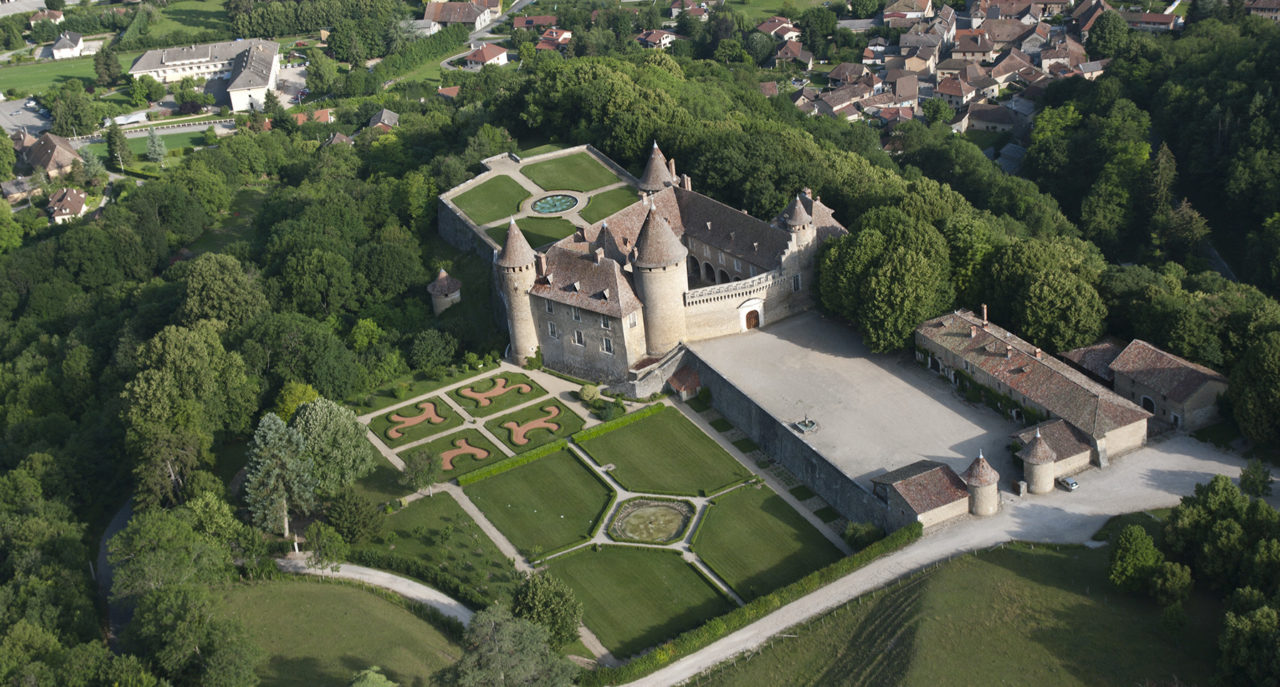
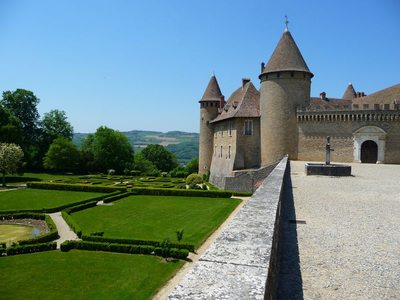
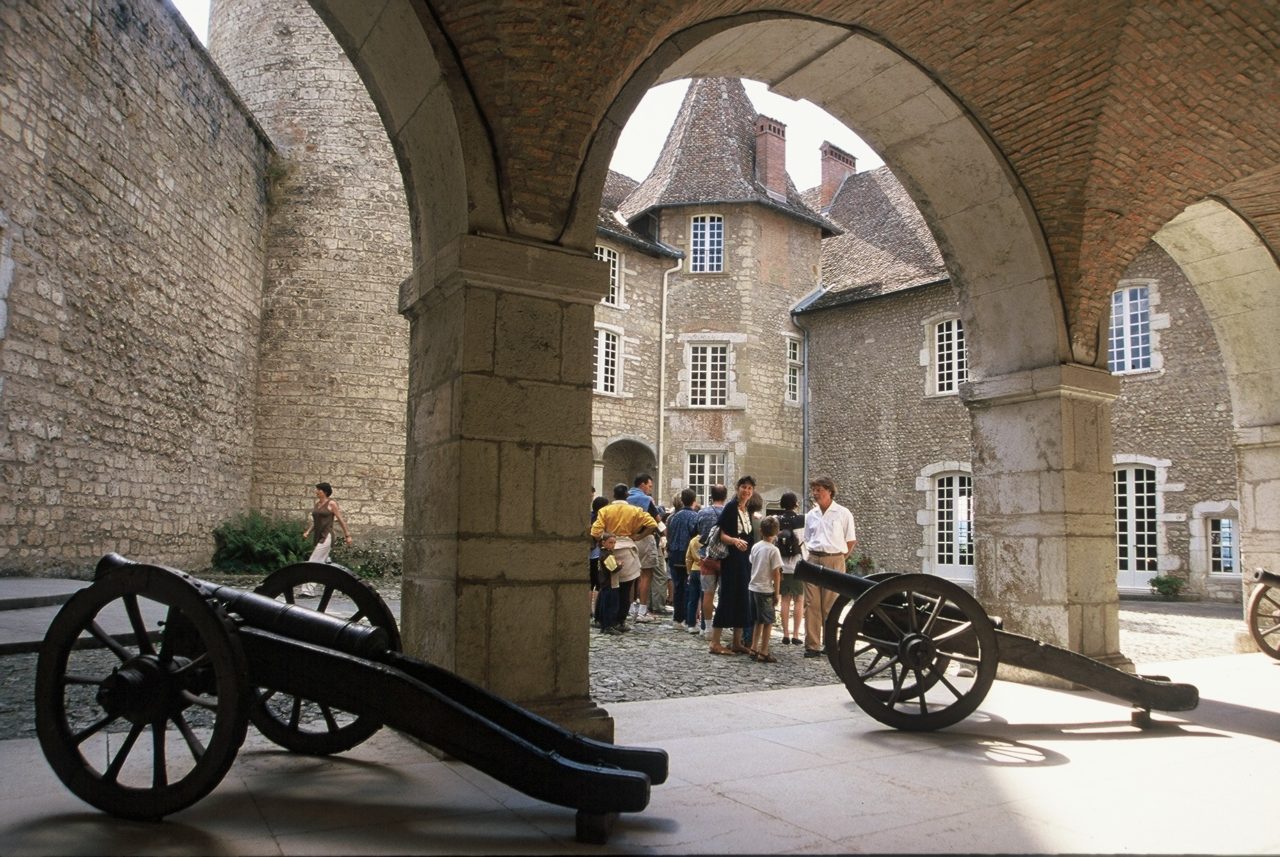
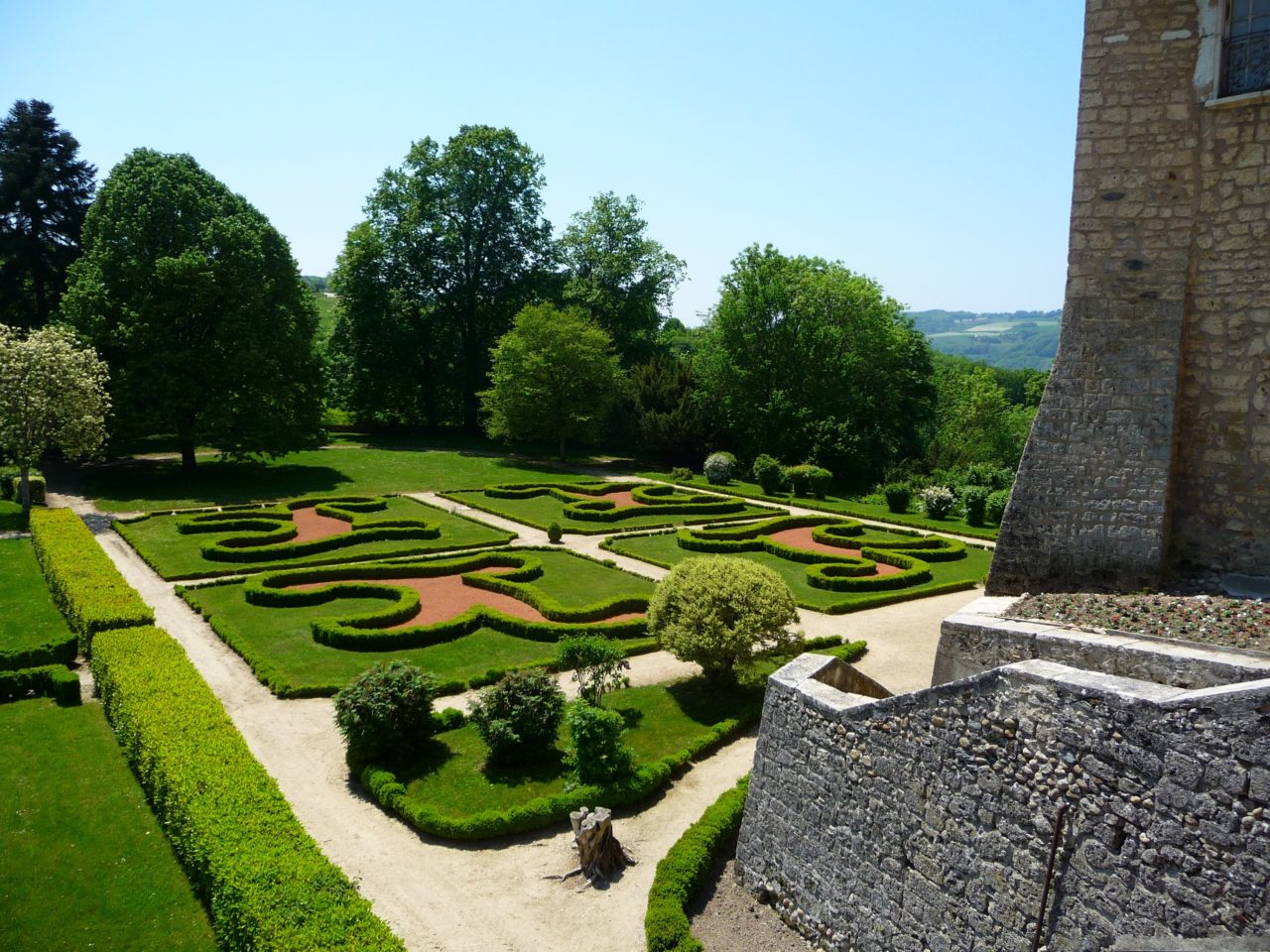
The castle of Pupetières – Châbons
The castle of Pupetières is a castle with sumptuous Neo-Gothic decorations, restored by Eugène Viollet-le-Duc in 1860.
Since its construction in the 13th century, the castle of Pupetières has been owned by the de Virieu family. Destroyed during the French Revolution, it was rebuilt in the neo-medieval style by Eugène Viollet-le-Duc. He was also responsible for the restoration of Notre-Dame-de-Paris. The polychromy of the glazed tiles and the interior decorations bear witness to the renaissance of the decorative arts at that time. Alphonse de Lamartine, a friend of the family, was inspired to write his famous poem Le Vallon. The painter Johan Barthold Jongkind spent several summers in a row in a house near the castle and sketched the landscape. He left behind a whole series of watercolours. This romantic place also inspired Stéphanie de Virieu, a pupil of David, painter, sculptor… And the poet and novelist Anna de Noailles.
The visit of the castles of Virieu and Pupetières is conducive to a beautiful walk between castles, adobe farms and the Bourbre valley.
A little extra: Inspiring and enchanting, the castle of Pupetières does not leave indifferent the visitors nor the artists who stayed or worked there. We find : Lamartine, Jongkind, Viollet-Le-Duc… At the end of September, the park of the castle is a sumptuous setting for the garden event of the Plant Days.



The castle of Vallin – Saint Victor de Cessieu
Overlooking the valley of La Tour-du-Pin and nestled in the heart of 200 hectares of forests, meadows and ponds, the castle of Vallin offers a preserved natural setting.
We discover the castle of Vallin built in the 14th century by the Vallin family. This historic private residence was partly redesigned and embellished in the 18th century. Its main body, topped with high roofs typical of the Dauphiné region, opens onto a courtyard of honour overlooking the valley and preceded by a majestic avenue of lime trees. You will discover the neo-Gothic living room and the romantic dining room decorated with Directoire mural paintings. It is unique in the region, as well as a fountain and a tufa fireplace. Today, you can admire the main building, topped by a round tower, as well as a chapel attached to a second medieval tower.
The castle of Vallin has obtained the labels “Historic Heritage” and “Heritage in Isère” and national awards, following a major restoration campaign.
A little extra: A fantastic forest setting and an omnipresent nature surround the castle of Vallin. You can take advantage of the thematic weekends to discover the “regional” books regularly put in the spotlight by the owners. An unusual feature of the visit is the horse pond, which is unique in the region.
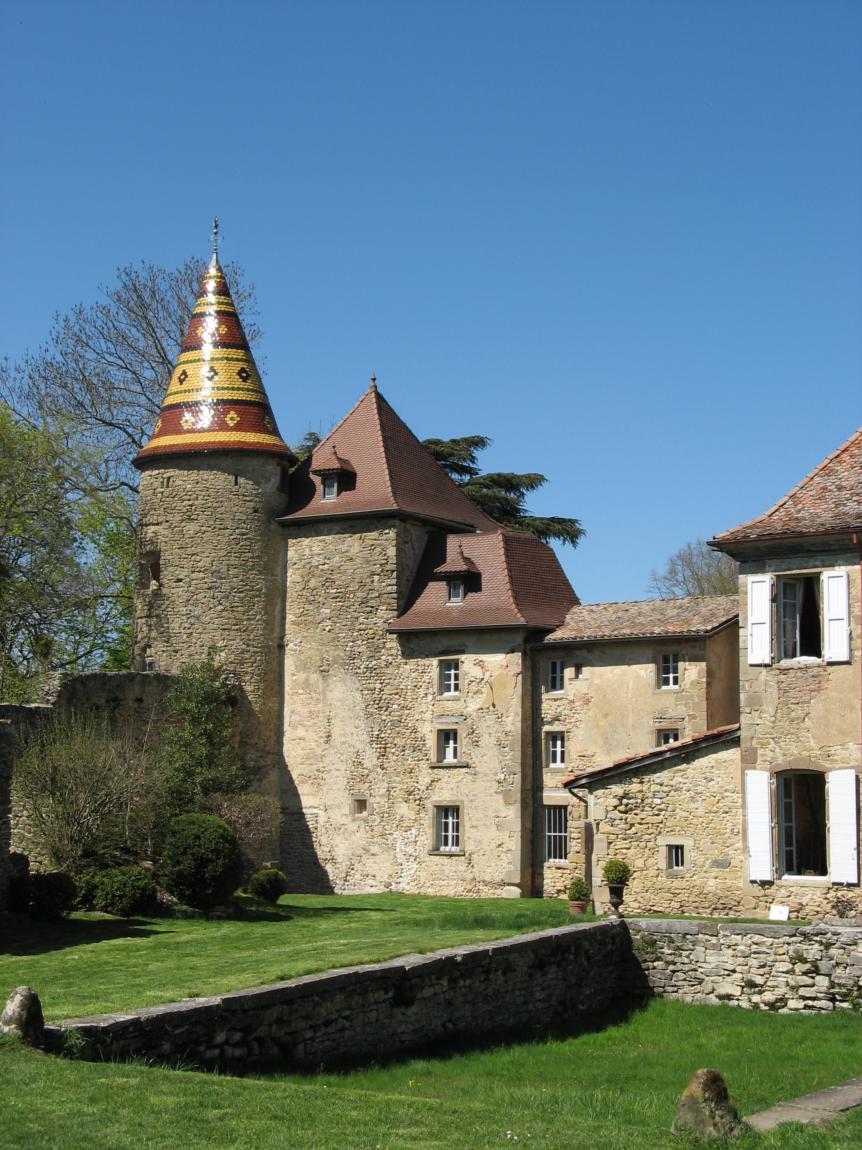
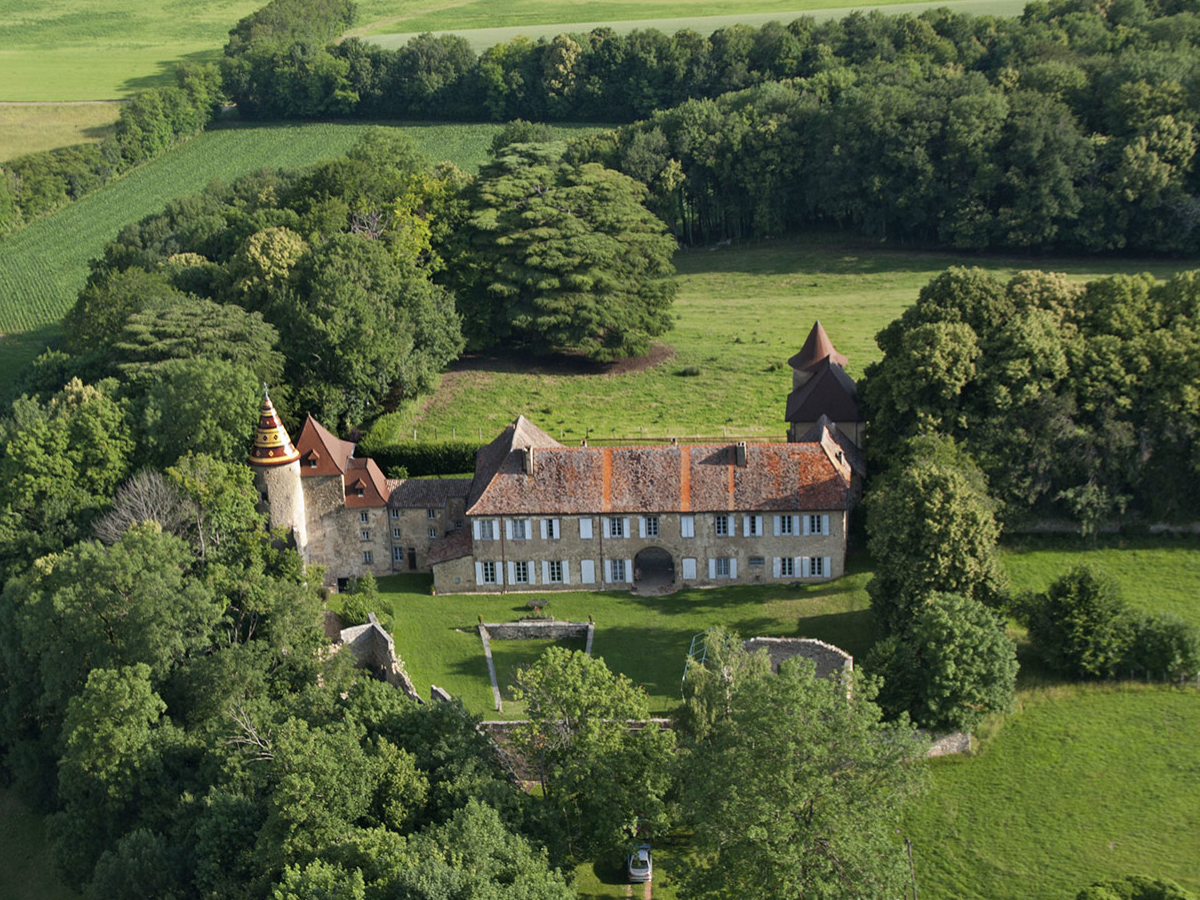
The castle of Cuirieu – Saint Jean de Soudain
The castle of Cuirieu, its outbuildings and formal gardens are listed as a 16th century Historic Monument. It is distinguished by its square-shaped main buildings flanked by round towers… And its beautiful outbuildings with a porch leading to its main courtyard.
The castle of Cuirieu is located on a natural relief. The Bourbre valley can be admired from its 9-hectare park, which is terraced. Of the former outbuildings, we can see that the remaining building is only a long main building which is part of a more complete complex – visible on the 1836 land register – which extended over three wings to reach the main building. This large main building is flanked by two corner towers and sheltered by high roofs made of scaly tiles. In its centre, a massive structure stands out, higher than the two adjoining wings. It forms a pavilion and houses the porch and the access passage covered by a semi-circular vault.
Outside, a molasse frame can be seen on the porch, the surface of which is carved in a latticework pattern. The two studded casements have been preserved. On the courtyard side, two dormer windows lighten the massive roof of each wing. Two other towers – one of which houses the private chapel – flank the retaining walls forming the enclosure.
A little extra: Here lived a very unusual and intriguing character. Let us introduce you to the Marquis du Vivier. He did not hesitate to walk his lion on a leash in the streets of La Tour du Pin. To discover this Dauphinois jewel and its history, go to the end of September during the European Heritage Days.
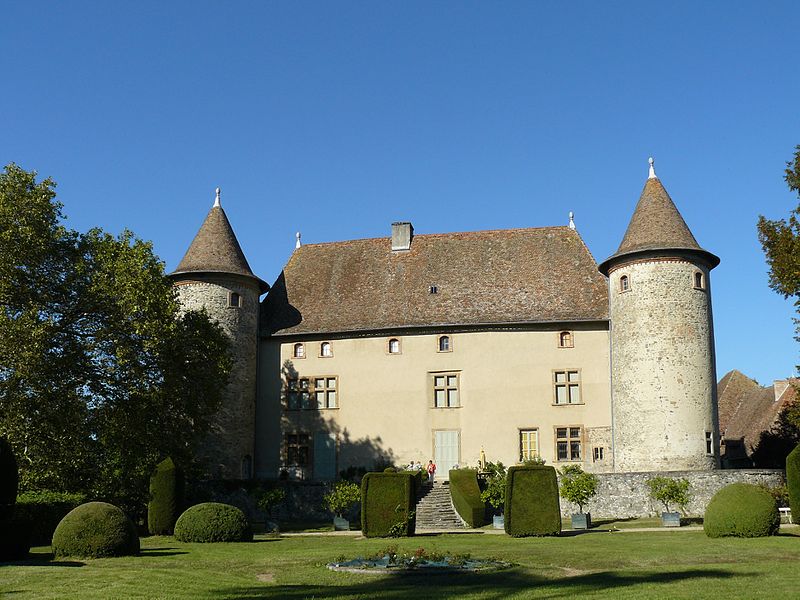
The castle of Vaulserre – Saint Albin de Vaulserre
Go through the main gate and enter the history of the Clermont and Vaulserre seigneuries. A house of decorations and colours made to seduce, the castle of Vaulserre presents one of the most beautiful combinations of architecture, decorations and landscape of the Dauphiné.
Situated at the foot of the Chartreuse Natural Park, the castle of Vaulserre is a former fortified house. Remodeled and decorated in the 18th century, it is a witness to the art of living of a large family. The main facade is rigorously ordered and decorated with a sculpted triangular pediment. Its vestibule decorated with magnificent trompe-l’oeil murals – works by Italian artists – its double-flight staircase and its unique library make it a very popular place for visitors. Outside, the walk on the terrace offers a sumptuous panorama of the Chartreuse and the foothills of the Jura. The English-style gardens, the water mirror and the tree-lined paths encourage romanticism and contemplation.
The castle of Vaulserre is entirely classified as a Historic Monument in 1985 with its terrace and site. He is one of the rare castles of the Dauphiné still in resonance with its 18th century history.
A little extra: The castle was also the setting for the film “Le Hussard sur le Toit” by Jean-Paul Rappeneau. The park and the terrace open up the landscape to the Chartreuse, the Guiers Valley and the Savoie. It is a treat for the eyes.

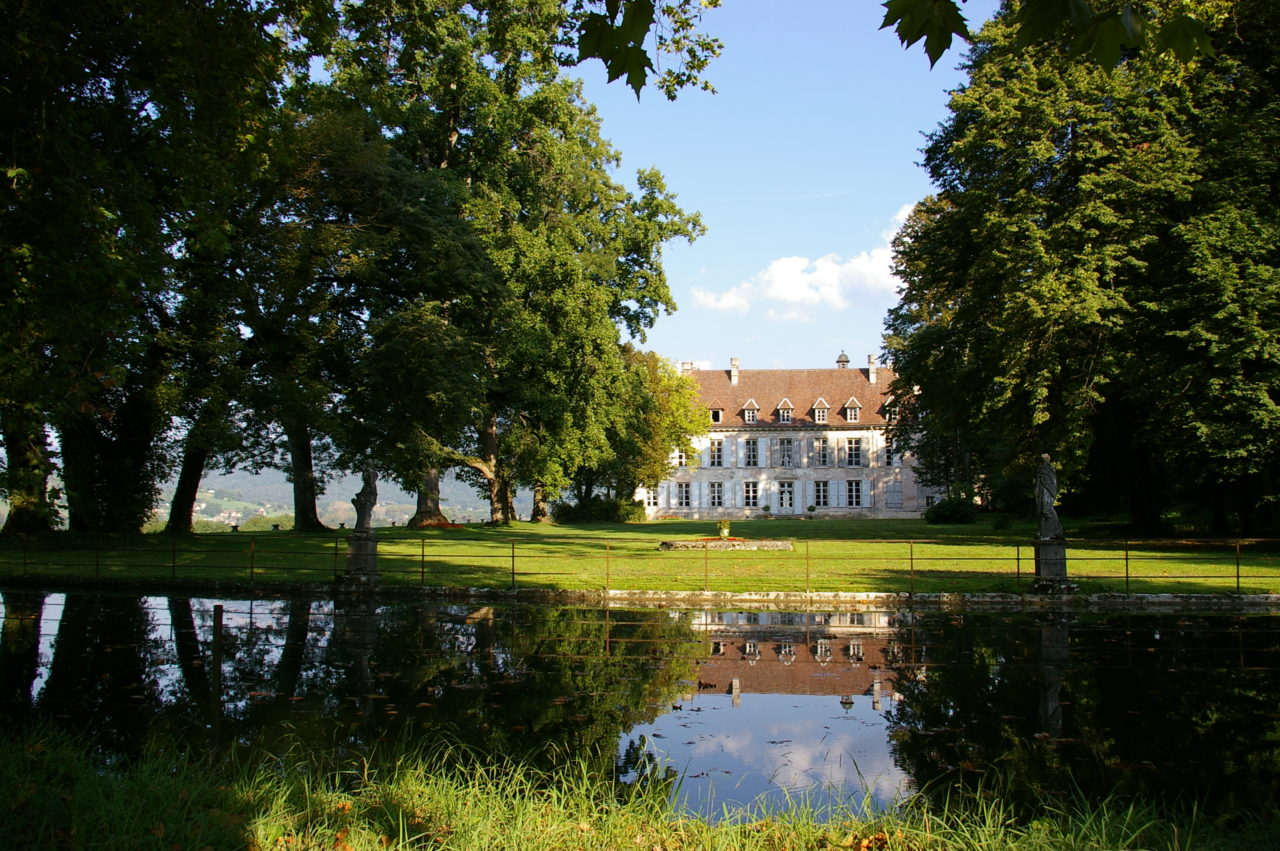
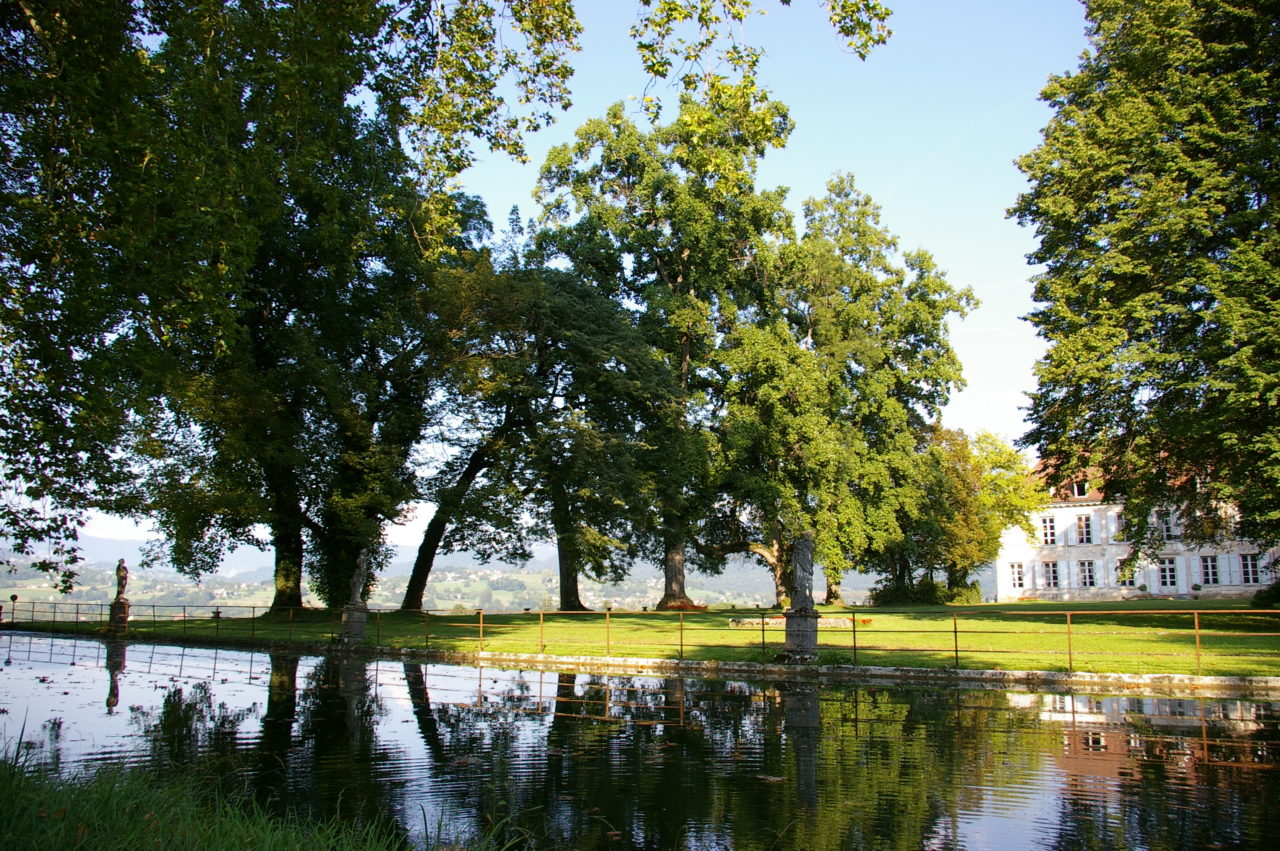
By Marjolène.
